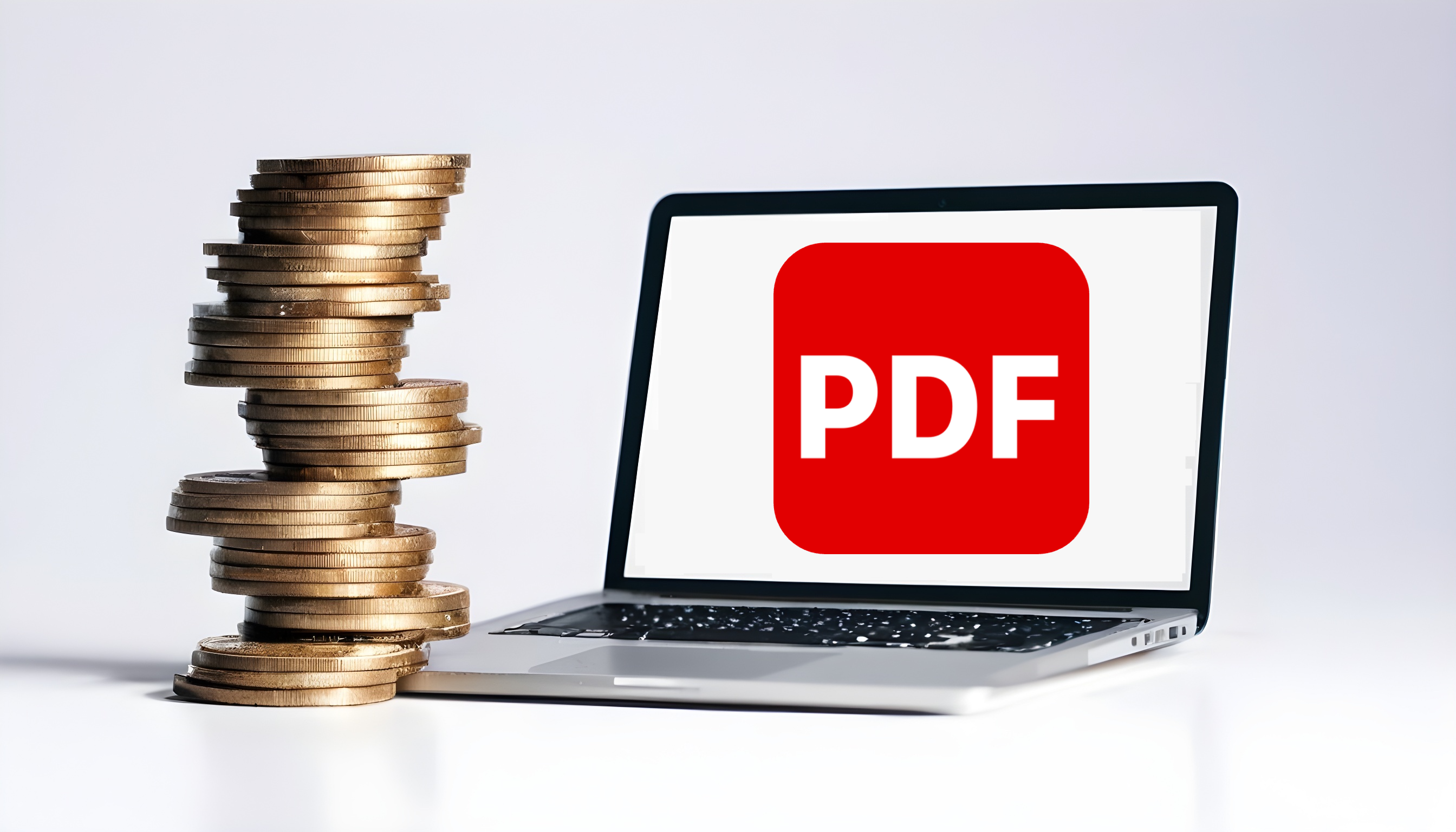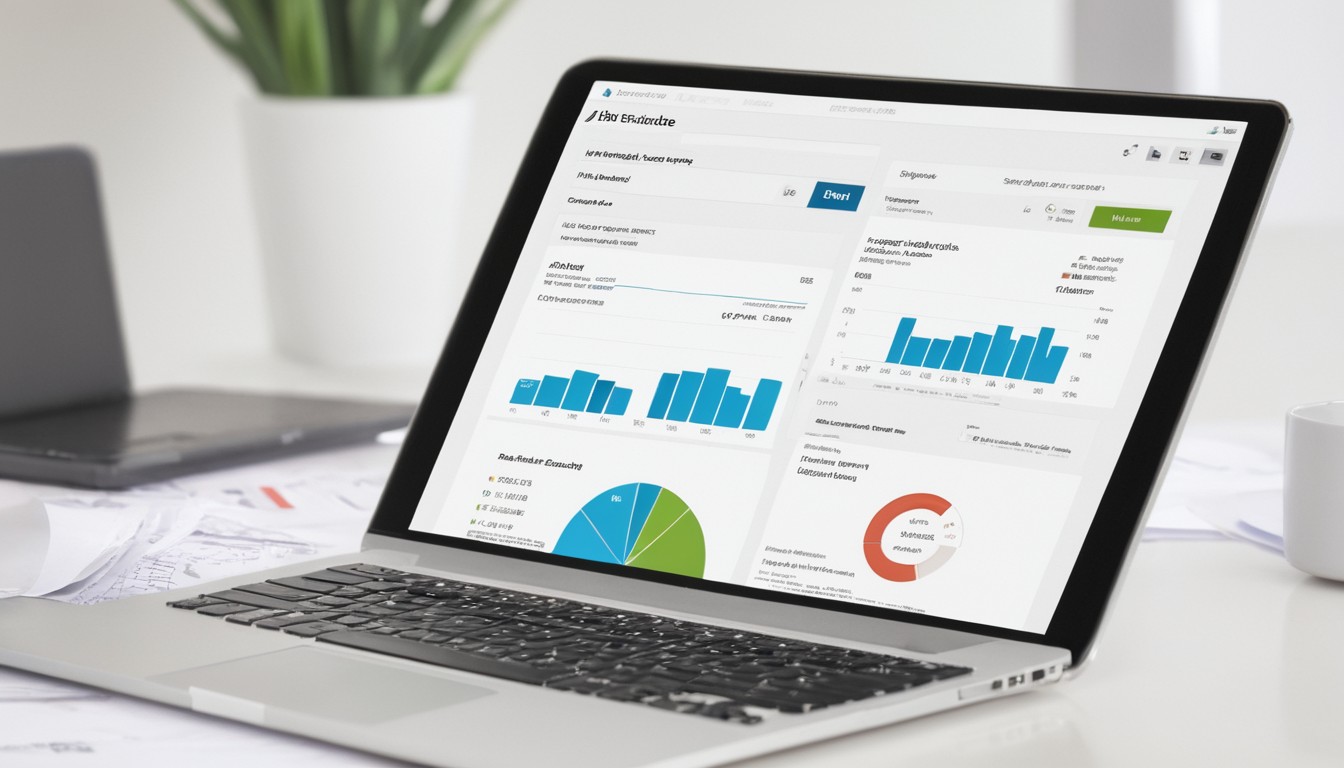A credit controller's guide to accounts receivable automation software

Picture this - 'month-end.' Why the dread? Perhaps because it directly impacts a company's financial health. No pressure!
The AR process is arguably one of the most fundamental elements of a successful business. Why? Because cash is king. And sometimes, it seems like the only people who know that are the Accounts Receivable Team. No one cares about the bottom line quite as much as the unsung heroes of AR, and we mean the true bottom line you actually realize - not the one merely written on the income statement.
However, more often than not, the accounts receivable process kick starts a credit controller's 'survival mode.' Between needing to send outstanding invoices and payment reminders, allocating customer payments, and reconciling the books - there is very little time to truly analyze the bigger financial picture, not to mention how the collection process influences the company's cash flow and working capital.
What is accounts receivable automation?
In its most basic form, AR automation software is all about speeding up the credit-to-cash cycle within AR processes. That means reducing overdue payments, increasing timely payments, and reducing manual processes wherever possible. Historically (and even now), AR teams were plagued by tedious manual accounts receivable processes.
Cue accounts receivable automation - doing precisely what the name suggests.
AR automation is leveraging technology to automate repetitive tasks within the accounts receivable process, streamlining a company's financial transactions with customers and drastically improving cash flow.
It does this by leveraging various advanced technologies and intelligent software systems to optimize the entire workflow, including invoice creation, payment collection, and reporting - all while still being able to foster good customer relationships.
Do I really need to automate accounts receivable?
In short? Yes. Besides the apparent benefits of streamlining the entire resource-intensive AR process, accounts receivable automation holds significant organizational value and customer experience benefits.
A switch to AR automation in the accounts team not only improves efficiency but also provides businesses with more accurate data and real-time visibility into a company's financial position.
As it currently stands, more than half of mid-market B2B companies use spreadsheets to manage their AR process. This most likely means that your competitors are dealing with the same challenges, just without the required tools to navigate them effectively and efficiently.
Which challenges exactly? Let's take a closer look.
Common accounts receivable challenges
It's a classic 'which came first' scenario - the challenges or the inefficient processes? Regardless, without intervention, the common challenges within accounts receivable and management processes keep perpetuating and encouraging each other. For example, delayed payments significantly hinder not only a healthy cash flow but also growth opportunities.
This merely scratches the surface of the cascade of challenges that ineffective AR processes can trigger, even unintentionally - yet these challenges keep popping up, making it difficult for your finance team to establish a steady, strategic, and efficient workflow.
Some of the consequences then include:
- Missed follow-ups on overdue invoices when collecting payments
- Writing off outstanding receivables as bad debt
- Errors on bills and invoices
- Incorrect payment allocation
- Lack of cash flow
AR process challenges don't just impact the AR team
The impact of ineffective manual processes and their consequences go beyond just the finance and accounting departments.
A recent survey shows that 76% of B2B companies surveyed know their company has lost money because of time spent dealing with accounts receivable and collecting payments. After closer investigation, 43% acknowledged losing 4-5% in monthly revenue due to operational inefficiency in payment processing.
The time wasted not only eats away at capacity and the business's cash flow but limits the AR team's value on the overall business, keeping them in a tight payments-focused headlock instead of leveraging their skills, time, and expertise towards a more strategically focused role.
This move from payments-focused to strategy is the very foundation of an effective accounts receivable process.
Best practices for accounts receivable
Fortunately, businesses don't need to accept the standard challenges of AR management as part and parcel of the job.
There are significant and transformational best practices that an AR team can implement to break the credit-to-cash bottleneck, reduce late payments, and elevate your business.
Reduce your DSO
One way to improve cash flow (and your entire process) is to reduce your Days Sales Outstanding (DSO). This means that fewer clients will take too long to complete their debts or ignore the agreed payment terms.
To do this, best practices include streamlining your strategy as much as possible (did someone say automation?). Setting up a clear debt collection strategy where every invoice gets sent out promptly together with all linked supporting documentation, can drastically improve the collection process.
Improve ledger management
Keeping your information centralized is vital to effective accounts receivable management. Often, companies interpret this as needing more tools, software, and technology to fill the gaps and cracks. However, sometimes, too many applications, tools, and software can further complicate the process.
Credit controllers can easily get lost in a whirlwind of tracking data from multiple ERPs, document storage, client communication and reporting tools, struggling to align and match the data with each other from one system to another. Instead, opt-in for end-to-end centralized tools that integrate and support the entire accounts receivable process.
Improve AR communications
Yes, client relationships are essential, but so is customer payment. At times, AR teams feel backed into corners, forced to compromise one or the other. However, with the right tools in place, finance teams can improve CX and communications while simultaneously improving the credit-to-cash cycle.
A simple example of how to elevate AR communications is to use accounts receivable management tools to update customer data and payment information regularly and consistently. A large portion of late payments can be attributed to mailing invoices to the wrong email addresses or not updating payment and contact information regularly.
Accounts receivable automation software helps AR teams implement this as best practice and avoid miscommunication.
Easier said than done?
Exactly - accounts receivable automation software helps you do it (and more).
What does accounts receivable technology do?
In its recent report, Finance 2025, Deloitte stated that "finance is entering a golden age of technology" and that "the days of 'human middleware' are coming to an end." In a nutshell, AR automation technology and software is the main driving force behind this shift.
For accounts receivable in particular, the right automation software automates a company's credit management, cash application, invoicing, collections, and other processes.
A few standout features of account receivable software should include the following:
Collection of outstanding payments
Facilitating payments is drenched in admin work. Accounts receivable automation allows you to send all required documentation to collect payments in one centralized solution. This includes automatically linking PODs and invoices along with any supporting documentation to ease the collection process of accounts due.
In addition, the right software should automatically (and electronically) generate and send statements, credit notes, invoices, delivery notes, and all supporting documents relevant to the collections process.
This feature speaks directly to the negative impact that overdue invoices can have on an organization, such as a high Days Sales Outstanding (DSO), ledger disorganization, client relationships, and more.
Easy document delivery and archiving
The AR team needs to have quick and easy access to all relevant documentation for delivery and archiving purposes - especially considering legislative compliance recordkeeping requirements.
With the right software in your arsenal, your AR team can easily access current and historical documents and information and distribute them on auto-pilot to the required recipients in bulk or in segregated groups. More so, all documents are archived according to regulatory requirements, so you don't fall at risk of non-compliance exposure.
Efficient communication and tracking
Although you can't negate the importance of effective and efficient communication, it shouldn't fill up the majority of your AR team's plate. Accounts receivable automation software not only automates communication to customers based on required selection criteria but gives your AR team valuable insights and detailed reports into the communication process, such as providing information on email delivery status and communication tracking and knowing the exact accounts that have been delivered to and which you need to update.
Error-free online remittance
The frequent non-allocation of payments means your accounts receivable team needs to spend more time doing account reconciliations. This is important because the money can only truly 'exist' once it's been formally (and correctly) allocated and recorded in your accounting system.
AR management technology provides clear and transparent cash application capabilities to help streamline remittance and provide AR teams and customers with all relevant data and documentation to ensure that all payments are recorded and aligned with the necessary invoices.
Ultimately, the right AR automation software should help overcome the main factors that hinder accounts receivable management, such as:
- A lack of transparent and effective communication between the AR team and customers
- Time-consuming and resource-intensive traditional AR processes
- A lack of real-time and historical data
- Frequent non-allocation of payments
For a deeper dive into software features, view our System1A Account Management Tools.
"But My ERP should do this!": Evaluating your automated accounts receivable system
For starters, don't ditch the ERP. Here's why:
ERP vs. AR automation solution
Your Enterprise Resource Planning (ERP) system is a critical part of running a business. Its integrated suite of software applications allows your company to manage almost every aspect of the organization. Think of it as the mothership. But unfortunately, not all ERPs are created equal. Ideally, the databases of your ERP system should include inputs from various departments such as HR, manufacturing,
marketing, sales, and accounting.
However, it's no secret that the limited functionality of ERP systems does not speak to the nuanced challenges that the AR team faces daily within the collection and payment process. When it comes to looking at financial data at a more granular and departmental level (like accounts receivable), accounts receivable software fills the gap.
The right accounts receivable software supports your ERP to tap into the relevant data to ensure nothing slips through the cracks. It then leverages that data to provide structure to your workflow and the required tools and technology to provide a unified platform for managing all related tasks.
In summary, technically, yes - your ERP has all the data you need but extracting said data and effectively utilizing it to streamline your operations, leverage improved cash flow, and interpret the data based on real-time insights is a nearly impossible feat without software that knows where to look (and what to do with it).
Now what? Starting your AR automation journey
Now that you're sold on implementing AR automation - the next step is to choose the right system for your company's specific needs. To help with the selection process, here are a few tips to keep in mind when starting your AR automation journey:
Identify which AR process you'd like to automate
It's important to be intentional and strategic about which processes you'd like to automate and why. This will vary depending on your specific business goals and objectives. Ultimately, the most important thing is that your AR software should help your AR team navigate their role.
So, whether it's creating and sending invoices, invoice collections, payment reminders, customer workflow/communications, invoice reconciliation, or all of the above, spend time discussing where you'd like to focus your greatest strengths and automate the rest.
Check if the AR system supports your tech stack
Don't choose an accounts receivable automation system that doesn't support your current tech stack, especially your ERP. Not all AR systems integrate with all ERPs, so when considering AR automation technology, it's important to consider how well your chosen solution fits into your current stack through direct integration.
Foster transparency and collaboration within the AR process
Your AR software shouldn't be reserved for only a select few within your AR team. Favor software options that make it easy to collaborate and communicate across teams and departments - even considering how clients can navigate the system to benefit their experience and meet their needs, and ultimately better align with your accounts receivable processes.
Make sure the AR software you are considering offers a free trial
This allows your team to "try before they buy" and make sure that it truly addresses the problems you were looking to solve. It's also important to make sure the free trial is of sufficient time to allow teams to make an informed decision.
Automate accounts receivable so you can focus on the exception
It's not the 'good money' that keeps the AR team up at night - it's the outliers, the late customer payments, the exceptions, the 'bad' debt, and accounts that need some heavy lifting to keep in check.
That's where we come in.
System1A is a South African based software provider that takes the burden of chasing after admin and paperwork from the AR team's shoulders while simultaneously providing them with the tools (and capacity) for more strategic and intentional human intervention in a timely manner.
Facilitate efficient and powerful AR processes with System1A AR automation
Leverage AR automation benefits and effective, strategy-led processes with System1A as your go-to tool to improve cash flow, customer satisfaction, and the overall AR process.
From efficient financial accounts communication with customers and suppliers, timeous cash receipts and payments, to generating financial decision-making reports with consolidated information that can be drilled down into micro detail.
Experience System1A and elevate your business's cash flow
<Request a demo or a 1-month free trial>


















